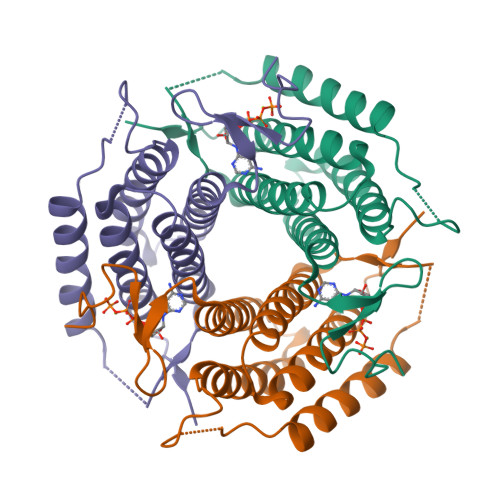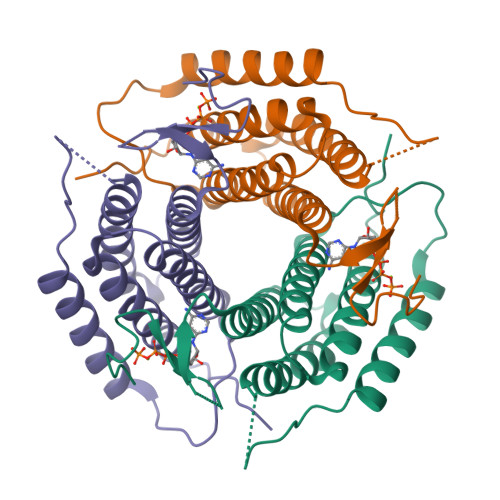Structural and functional analyses of the human-type corrinoid adenosyltransferase (PduO) from Lactobacillus reuteri.
Mera, P.E., St Maurice, M., Rayment, I., Escalante-Semerena, J.C.(2007) Biochemistry 46: 13829-13836
- PubMed: 17988155
- DOI: https://doi.org/10.1021/bi701622j
- Primary Citation of Related Structures:
2R6T, 2R6X - PubMed Abstract:
ATP:Co(I)rrinoid adenosyltransferase (ACA) catalyzes the conversion of cobalamin to coenzyme B12, an essential cofactor in animal metabolism. Several mutations of conserved residues in the active site of human ACA have been identified in humans with methylmalonic aciduria. However, the catalytic role of these residues remains unclear. To better understand the function of these residues and to determine how the enzyme promotes catalysis, several variants of a human-type ACA from the lactic acid bacterium Lactobacillus reuteri (LrPduO) were kinetically and structurally characterized. Kinetic analyses of a series of alternate nucleotides were also performed. Substrate inhibition was observed at subsaturating concentrations of ATP, consistent with an ordered binding scheme where ATP is bound first by the enzyme. Modification or elimination of an active site, inter-subunit salt bridge resulted in a reduced "on" rate for ATP binding, with a less significant disruption in the rate of subsequent catalytic steps. Kinetic and structural data demonstrate that residue Arg132 is not involved in orienting ATP in the active site but, rather, it stabilizes the altered substrate in the transition state. Two functional groups of ATP explain the reduced ability of the enzyme to use alternate nucleotides: the amino group at the C-6 position of ATP contributes approximately 6 kcal/mol of free energy to ground state binding, and the nitrogen at the N-7 position assists in coordinating the magnesium ion in the active site. This study provides new insight into the role of substrate binding determinants and active site residues in the reaction catalyzed by a human-type ACA.
Organizational Affiliation:
Department of Bacteriology, University of Wisconsin-Madison, Madison, Wisconsin 53706, USA.





















